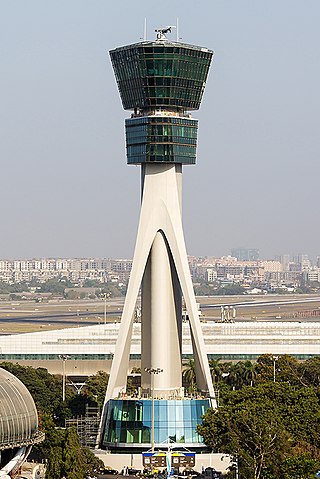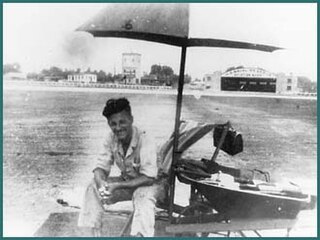
Air traffic control (ATC) is a service provided by ground-based air traffic controllers who direct aircraft on the ground and through a given section of controlled airspace, and can provide advisory services to aircraft in non-controlled airspace. The primary purpose of ATC worldwide is to prevent collisions, organize and expedite the flow of air traffic, and provide information and other support for pilots.

Air traffic control specialists, abbreviated ATCs, are personnel responsible for the safe, orderly, and expeditious flow of air traffic in the global air traffic control system. Usually stationed in air traffic control centers and control towers on the ground, they monitor the position, speed, and altitude of aircraft in their assigned airspace visually and by radar, and give directions to the pilots by radio. The position of air traffic controller is one that requires highly specialized knowledge, skills, and abilities. Controllers apply separation rules to keep aircraft at a safe distance from each other and within proper airspace in their area of responsibility and move all aircraft safely and efficiently through their assigned sector of airspace, as well as on the ground. Because controllers have an incredibly large responsibility while on duty and make countless real-time decisions on a daily basis, the ATC profession is consistently regarded around the world as one of the most mentally challenging careers, and can be notoriously stressful depending on many variables. Many controllers, however, cite high salaries, and a large, unique, and privileged degree of autonomy as major advantages of their jobs.

The ICAOairport code or location indicator is a four-letter code designating aerodromes around the world. These codes, as defined by the International Civil Aviation Organization and published quarterly in ICAO Document 7910: Location Indicators, are used by air traffic control and airline operations such as flight planning. ICAO codes are also used to identify other aviation facilities such as weather stations, international flight service stations or area control centers, whether or not they are located at airports. Flight information regions are also identified by a unique ICAO-code.

International Federation of Air Traffic Controllers' Associations (IFATCA) unites the professional associations of air traffic controllers from around the world. In total, it represents over 130 of such organisations, with a combined membership of over 50,000 air traffic controllers.

An air defense identification zone (ADIZ) has existed since February 10, 2003, around the Baltimore-Washington Metropolitan Area to restrict air traffic near Washington, D.C.

The Professional Air Traffic Controllers Organization or PATCO was a United States trade union that operated from 1968 until its decertification in 1981 following an illegal strike that was broken by the Reagan administration.

The Air Line Pilots Association, International (ALPA) is the largest pilot union in the world, representing more than 75,000 pilots from 43 U.S. and Canadian airlines. ALPA was founded on 27 July 1931 and is a member of the AFL-CIO and the Canadian Labour Congress. Known internationally as U.S.-ALPA, ALPA is also a member of the IFALPA.

Airservices Australia is an Australian Government owned corporation, responsible for providing safe, secure, efficient and environmentally responsible services to the aviation industry within the Australian Flight Information Region (FIR). Some of Airservices responsibilities include air traffic control, airways navigation and communication facilities, publishing aeronautical data and airport rescue and fire-fighting services. Airservices Australia has international partnerships with ICAO, CANSO and IATA.

In air traffic control, an area control center (ACC), also known as a center or en-route center, is a facility responsible for controlling aircraft flying in the airspace of a given flight information region (FIR) at high altitudes between airport approaches and departures. In the US, such a center is referred to as an air route traffic control center (ARTCC).

The National Air Traffic Controllers Association (NATCA) is a labor union in the United States. It is affiliated with the AFL–CIO, and is the exclusive bargaining representative for air traffic controllers employed by the Federal Aviation Administration (FAA). It also represents a range of workers related to the air traffic control (ATC) industry, and the FAA itself.

Gol Transportes Aéreos Flight 1907 was a scheduled domestic passenger flight from Manaus, Brazil, to Brasília and Rio de Janeiro. On 29 September 2006, the Boeing 737-800 operating the flight collided with an Embraer Legacy 600 business jet over the Brazilian state of Mato Grosso. The winglet-equipped wingtip of the Legacy sliced off about half of the 737's left wing, causing the 737 to break up in midair and crash into an area of dense jungle, killing all 154 passengers and crew. Despite sustaining serious damage to its left wing and tail, the Legacy landed with its seven occupants uninjured.

Archie William League is generally considered the first air traffic controller in the United States. League had been a licensed pilot, and licensed engine and aircraft mechanic. He had barnstormed around in Missouri and Illinois with his "flying circus," prior to St. Louis hiring him as the first U.S. air traffic controller in 1929. He was stationed at the airfield in St. Louis, Missouri. Before the installation of a radio tower, he was a flagman who directed traffic via flags. His first "control tower" consisted of a wheelbarrow on which he mounted a beach umbrella for the summer heat. In it he carried a beach chair, his lunch, water, a notepad and a pair of signal flags to direct the aircraft. He used a checkered flag to indicate to the pilot "GO", i.e. proceed, or a red flag to indicate the pilot should "HOLD" their position. He kept warm out on the field in the winters by wearing a padded flying suit. When a radio tower was installed in the early 1930s, he became the airport's first radio controller.

On 31 January 2001, Japan Airlines Flight 907, a Boeing 747-400 en route from Haneda Airport, Japan, to Naha Airport, Okinawa, narrowly avoided a mid-air collision with Japan Airlines Flight 958, a McDonnell Douglas DC-10-40 en route from Gimhae International Airport, South Korea, to Narita International Airport, Japan. The event became known in Japan as the Japan Airlines near miss incident above Suruga Bay. Had the accident occurred, it could have potentially been the worst mid-air collision and the worst air disaster of all time.
The Guild of Air Traffic Control Officers (GATCO) is a guild of air traffic controllers which began organising in 1952 and was established in 1954. In 2004, it had over 2000 members spread over 125 locations in the UK and overseas in both civilian and military sectors.

Northwest Airlines Flight 188 was a regularly scheduled flight from San Diego, California, to Minneapolis/St. Paul, Minnesota, on October 21, 2009, which landed over one hour late in Minneapolis/St Paul after overshooting its destination by more than 150 miles (240 km) because of pilot error. As a result of the incident, the Federal Aviation Administration (FAA) revoked the pilot certificates of the involved pilots and the National Transportation Safety Board (NTSB) issued recommendations for changes to air traffic control procedures and the rules for cockpit crew. The incident also caused American lawmakers to move to prevent pilots on U.S. airliners from using personal electronic devices while taxiing or flying. In 2013, changes to flight deck automation were suggested, and prototype designs that could mitigate errors leading to similar incidents were described.

Virgin Australia Airlines (NZ) Limited formerly Pacific Blue Airlines (NZ) Limited, was an airline based in New Zealand. It was established as the New Zealand subsidiary of Australian airline Virgin Blue. It was a fully owned subsidiary of Virgin Australia Holdings. It was renamed Virgin Australia Airlines (NZ) Ltd in December 2011 when its parent company decided to bring all its airlines under the one banner.
The International Federation of Air Line Pilots' Associations (IFALPA) is an international not-for-profit organization of national aircraft pilot trade unions, known as pilot associations. IFALPA was founded in April 1948 and is based in Montreal, Quebec, Canada.

On July 7, 2017, an Airbus A320-211 operating as Air Canada Flight 759 was nearly involved in an accident at San Francisco International Airport in San Mateo County, California, United States. The flight, which originated at Toronto Pearson International Airport, had been cleared by air traffic control to land on runway 28R and was on final approach to land on that runway; however, instead of lining up with the runway, the aircraft had lined up with the parallel taxiway, on which four fully loaded and fueled passenger airplanes were stopped awaiting takeoff clearance. The flight crew initiated a go-around prior to landing, after which it landed without further incident. The aircraft on the taxiway departed for their intended destinations without further incident. The subsequent investigation by the National Transportation Safety Board (NTSB) determined that the Air Canada airplane descended to 59 feet (18 m) above the ground before it began its climb, and that it missed colliding with one of the aircraft on the taxiway by 14 feet (4.3 m).
















